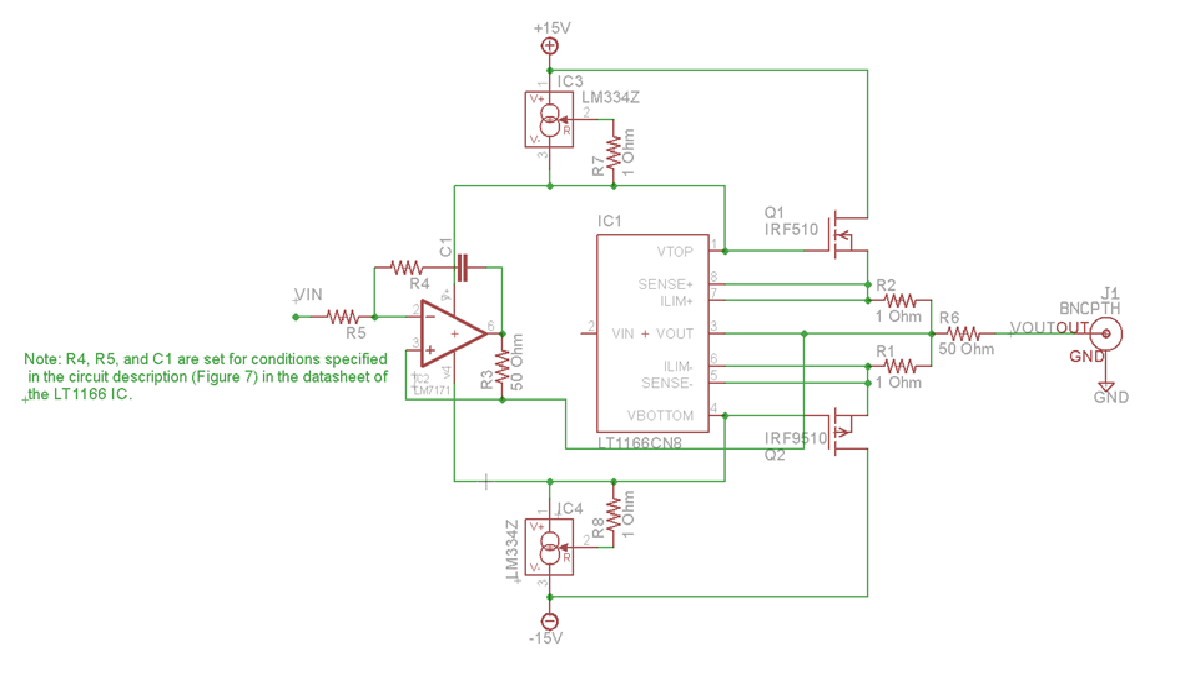Other Parts Discussed in Thread: THS3491, LM334, BUF634A, LM6171
Hello!
I am designing a PCB with the LM7171 used in accordance with the Schematic in Figure 7 in the LT1166 datasheet (see below) and I am using it as the output amplifier in a sine Square triangle (maximum freq. 5MHz) function generator (I am shooting for >50ns rise time on square but i don't think that effects the LM7171 for the purposes of this question) the out put would be a maximum of +-15Vpp. I have two main questions, (a) would using the LM7171 be appropriate in the first place, and (b) would using FR1 vs FR4(for cost reasons) on the PCB affect The LM7171 in stability, rise time etc.?
Thanks for any help!
p.s. Here is the LT1166 datasheet((https://www.analog.com/media/en/technical-documentation/data-sheets/1166fa.pdf)).


